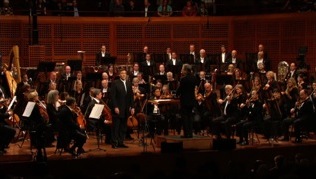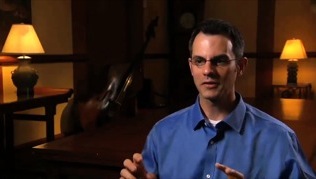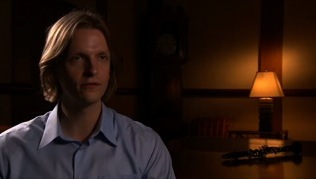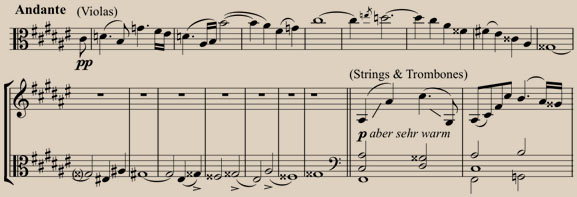Mahler never tired of experimenting with orchestral colors and techniques. He called for traditional instruments to use new techniques; he combined instruments in unusual and effective ways, and he brought out qualities in instruments that nobody had ever imagined!

-
After the premiere of his First Symphony, Mahler found that the opening “sounded far too substantial for the shimmering and glimmering of the air that I had in mind.” So he changed the instrumentation to the whispery sound of string harmonics. He continued revising the instrumentation for five more years before the symphony’s publication.
 Play
Play
Evocations of the sounds of nature, realized through imaginative instrumentation, recur throughout Mahler's works. In "On My Love's Wedding Day" (Wenn mein Schatz Hockzeit macht), the first song of Mahler's Songs of a Wayfarer (Lieder eines fahrenden Gesellen) the narrator finds himself in a countryside that has burst into bloom. High bells illustrate the Blümlein (little flowers) of the text, while solo flute and violin trill like a pair of lovebirds.
 Play
Play
-
Mahler underscored the importance of tone color to aesthetic impact when he wrote about the Funeral March of his First Symphony: “In the March movement the instruments are disguised and go round dressed as strangers. Everything has to sound deadened and muffled, as if ghosts were parading past us. Making sure that each new entry of the canon theme comes over distinctly, with a surprising tone color that attracts attention, caused me a real headache! Eventually I got the instrumentation right, resulting in that weird, otherworldly effect you noticed today. And I don’t think anyone has yet managed to work out how I achieve it.”
 Play
Play
 Play
Play
The Third Symphony’s 35-minute-long first movement covers a vast emotional territory. On the darker side, it features an intense oration for tenor trombone, as expressive as any opera aria.
-
The passage evokes the world of Mozart’s Don Giovanni, an opera that Mahler championed and conducted regularly. Listen to the way Mozart uses funerary trombones to announce the ghost of the Commendatore, foreshadowing Don Giovanni’s imminent death and damnation.
-
Now listen to Mahler's trombone passage, which is in the same key (D minor) and in the same slow, trudging tempo as Mozart's.

In the Fifth Symphony’s Scherzo, Mahler writes for an "obligato" horn, who leads the orchestra through the movement:
-
The horn leads off with this swinging waltz
-
that sets off a sequence of variations in the orchestra.
-
Even the crow-like calls of the woodwind are in waltz rhythm.
-
Later on, we hear the sounds of the horn echoing from mountaintop to mountaintop, as they introduce a new, majestic melody.
-
It too tells a story as it is developed and varied. At one point, stripped of its grandeur, it’s taken up by a quartet of poor street musicians.
-
In the coda, the universe dances in 3/4 time in this spectacular sequence of flourishes.

-
Later in his life, like Berlioz and Brahms before him, Mahler turned to the sombre-hued viola for his most personal confessions. The violas open the Tenth Symphony with fifteen gentle bars that hint at a possible G major harmony; but as they progress, they seem to repudiate the idea of resolving into in any key at all. At the last possible moment the strings envelop them with a warm F-sharp major embrace.